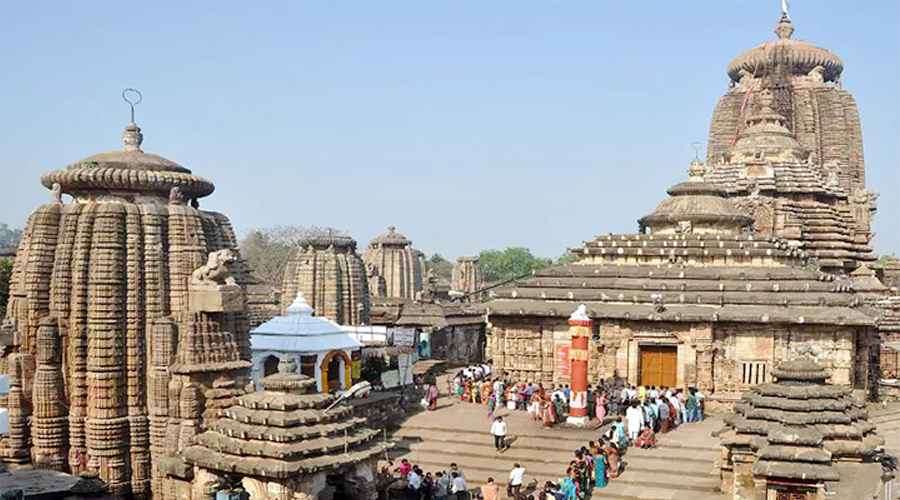India, a land steeped in history and culture, is often referred to as the cradle of civilization. Its vast landscapes hold centuries of stories, architectural landmarks, mythological legacies, and artistic brilliance that represent the country’s unmatched heritage. To honor and preserve this history, a nationwide campaign was conducted in the early 2000s, inviting people to vote and select the Seven Wonders of India. These monuments were chosen as symbols of India’s glorious past, reflecting its architectural finesse, spiritual roots, and cultural diversity.
The final list of the Seven Wonders of India includes:
- Gomateshwara Statue – Karnataka
- The Golden Temple – Punjab
- Hampi – Karnataka
- Khajuraho Temples – Madhya Pradesh
- Konark Sun Temple – Odisha
- Nalanda University – Bihar
- Taj Mahal – Uttar Pradesh
Each wonder has its own story to tell—of kings and kingdoms, artists and saints, devotion and creativity. Let us take a detailed journey through these seven marvels and understand why they shine as jewels in India’s crown.
1. Gomateshwara Statue, Karnataka
Rising to a height of 57 feet, the Gomateshwara Bahubali statue in Shravanabelagola, Karnataka, is one of the tallest monolithic statues in the world. Carved out of a single block of granite in the 10th century under the Ganga dynasty, it represents Bahubali, revered deeply in Jainism for his sacrifice, penance, and ultimate enlightenment.
The most striking aspect of this statue is its simplicity and serenity—the calm face, half-closed eyes, and the posture symbolizing deep meditation. What makes this wonder even more notable is the Mahamastakabhisheka Festival, held once every 12 years, when the statue is anointed with milk, sandalwood paste, saffron, turmeric, and even gold coins. Devotees and tourists alike view this as an unforgettable spiritual experience.
2. The Golden Temple, Punjab
Located in Amritsar, Punjab, the Golden Temple or Sri Harmandir Sahib is the most sacred shrine of the Sikhs. Built in the 16th century by Guru Arjan Dev, and later beautified with gold plating during the reign of Maharaja Ranjit Singh, this temple is not just an architectural spectacle but also a symbol of equality and humility.
The temple itself is surrounded by the Amrit Sarovar, a holy water tank believed to possess healing properties. Its gleaming golden dome against the reflection of its waters creates an ethereal sight, especially during early dawn and dusk. Another remarkable feature is the langar (community kitchen), which serves free meals to thousands of people every day regardless of caste, religion, or social background. The Golden Temple is, therefore, not only a wonder of architecture but also a living example of service, faith, and brotherhood.
3. Hampi, Karnataka
Often described as an open-air museum of ruins, Hampi in Karnataka is a UNESCO World Heritage Site that narrates the grandeur of the 14th-century Vijayanagara Empire. Spread across vast rocky landscapes and the Tungabhadra River, this ruined city is dotted with grand temples, artistic sculptures, bustling bazaars, and royal enclosures.
Key attractions include the Virupaksha Temple, the Vittala Temple known for its iconic stone chariot and musical pillars, and the royal palace remains. Hampi served not only as a political center but also as a hub of art, religion, and commerce during its prime. Even today, the sprawling ruins convey awe at the architectural brilliance and urban planning of that era.
4. Khajuraho Temples, Madhya Pradesh
The Khajuraho Group of Monuments, built between the 9th and 12th centuries by the Chandela dynasty, are globally famous for their stunning artistry. Out of an original 85 temples, around 20 survive today. What makes them unique is the exquisite stone carvings that adorn their walls. These carvings depict themes of spirituality, yoga, courtly life, festivities, and yes, also sensuous depictions of love and desire.
Contrary to popular belief, the erotic sculptures make up only a small fraction of the overall artwork. The larger message of Khajuraho is the harmonious celebration of life—a reminder that human existence is both physical and spiritual, material and divine. The architectural style, with tall spires symbolizing mountains, beautifully captures India’s syncretic philosophy.
5. Konark Sun Temple, Odisha
Dedicated to the Sun God, Konark Sun Temple is an architectural marvel located on the sandy shores of Odisha. Built in the 13th century by King Narasimhadeva I of the Eastern Ganga dynasty, the temple is shaped like a colossal chariot with 12 intricately carved wheels on each side and seven horses pulling it forward.
The temple captures the idea of time and cosmic order, with sculptures depicting deities, warriors, musicians, and celestial beings. Although much of the central tower is now in ruins, what remains continues to inspire awe across the world. Recognized as a UNESCO World Heritage Site, the Konark Sun Temple is celebrated not only for its scale but also for its intricate iconography that merges science, art, and spirituality.
6. Nalanda University, Bihar
The ancient ruins of Nalanda University in Bihar speak volumes about India’s glory as a global seat of learning. Established in the 5th century CE, Nalanda was not just India’s pride but also one of the world’s first residential universities, attracting scholars from China, Korea, Japan, Tibet, and Central Asia.
The university had thousands of students and teachers across disciplines—Buddhist philosophy, medicine, mathematics, logic, astronomy, and literature. Famous scholars like Xuanzang and Yijing documented their experiences of studying here. Despite being destroyed in the 12th century by invading forces, the remnants of its grand libraries and monasteries remind us of India’s contribution to global education.
Today, efforts are being made to revive Nalanda’s spirit as an international center of research, making this wonder not just a historical relic but also a guiding inspiration for future generations.
7. Taj Mahal, Uttar Pradesh
The Taj Mahal, in Agra, Uttar Pradesh, is perhaps the most iconic symbol of India worldwide. Built in the 17th century by Mughal Emperor Shah Jahan in memory of his beloved wife Mumtaz Mahal, this white marble mausoleum is the ultimate symbol of love and devotion.
The Taj exemplifies Mughal architecture, blending Persian, Islamic, and Indian styles seamlessly. Its central dome, delicate inlay work with semi-precious stones, symmetrical gardens, and the reflection pools create a harmony that leaves visitors awe-struck. Recognized as one of the Seven Wonders of the World, the Taj Mahal is a UNESCO World Heritage Site and a pilgrimage site for lovers, artists, historians, and tourists alike.
Conclusion
The Seven Wonders of India showcase more than just monuments of stone—they represent legacies of devotion, creativity, and knowledge that continue to shape Indian identity. From the meditative calm of the Gomateshwara Statue to the dazzling brilliance of the Golden Temple, from the ruins of Hampi to the erotic beauty of Khajuraho, from the cosmic symbolism of Konark to the intellectual torch of Nalanda, and finally, the eternal love enshrined in the Taj Mahal—these wonders embody the very soul of a nation that has always celebrated diversity and brilliance.
Visiting each of these wonders is not merely a touristic journey but also a spiritual and cultural pilgrimage into India’s timeless heart. They remind us that while empires may rise and fall, what endures is human imagination, devotion, and the desire to leave behind stories carved in stone for generations to admire.



